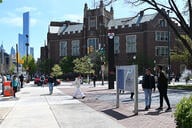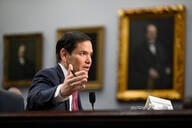You have /5 articles left.
Sign up for a free account or log in.
Students who participate in federal work-study are more likely to graduate and get a job after college. But those who get the biggest academic benefits from the program -- low-income students at public colleges who would have worked anyhow -- are the least likely to receive the federal grants.
Those are the primary findings from a newly released study by two researchers at the Community College Research Center (CCRC) at Columbia University’s Teachers College.
While the research found generally positive impacts of the federal work-study program, it also found one surprising downside -- participants take on substantially higher debt compared to non-participants with similar characteristics, including income, gender, institution type and other factors.
Students in federal work-study are 21 percentage points more likely to borrow during their first year of college, found the study, which is based on a national sample of 12,200 students. Participants also had a cumulative undergraduate debt load that was $6,263 higher than similar students who were nonparticipants.
A possible explanation for the increased debt is that college financial aid officers typically package loans and work-study grants together, said Judith Scott-Clayton, a co-author of the study and an assistant professor of economic and education at Columbia.
That means students who participate are much more likely to also take out loans, the study said.
Scott-Clayton called the finding alarming, adding that it “could ultimately undermine the positive effect of the program.”
Roughly 700,000 students, or 1 in every 10 full-time, first-year undergraduates, receive federal work-study subsidies each year, according to the study. With an annual cost of about $1 billion, the grants cover up to 75 percent of the wages of student employees who typically work on campus 10 to 15 hours per week.
To be eligible, students must file a Free Application for Federal Student Aid (FAFSA) to demonstrate that their expected family contribution is less than the total cost of attendance at their institution. However, the federal work-study money goes to colleges, which then decide how to distribute it to eligible students. Work study is one of three federal programs that are designed this way, along with the Supplemental Educational Opportunity Grant and Perkins Loan Programs.
As prior research also has shown, the study said an “arcane” funding formula provides much more money per student to older, more expensive institutions -- particularly private colleges. In 2012 fully one-quarter of students attending private four-year institutions received federal work-study funds, compared to just 6 percent of students at public four-year institutions. Student advocates have called on the feds to change the funding formula.
“Federal work-study is not allocated in an equitable way,” said Scott-Clayton.
The National Association of Student Financial Aid Administrators agrees. A committee the association created last year released a report calling for changes to the funding formula.
Benefits of Better Jobs
Participating in federal work-study is not the same as having a job while attending college.
For starters, a slight majority of participants would have worked during their first year of college anyhow, according to the new study, which Veronica Minaya, a senior research assistant at CCRC, co-wrote. The study determined whether students would have worked by comparing the participant group with a much larger comparison group -- using detailed comparisons based on students' characteristics to gauge the likelihood of whether a student would have worked outside of federal work-study.
The jobs for students in the program, however, are substantially different from the ones students would have had if they didn’t participate. They pay somewhat less (61 cents less per hour), but are much more likely to be located on campus (52 percentage points more likely), which means less commuting and more flexible scheduling, said Scott-Clayton. The jobs also are more likely to be related to the student’s major.
“Students don’t work as many hours as they would in a job off-campus,” she said. “It’s a more supportive environment.”
For example, participants averaged 11 hours of work per week compared with 18 hours per week for working nonparticipants. And 80 percent of federal work-study students work on campus.
The primary benefits of what Scott-Clayton calls a “much better job” are academic. Participants in federal work-study are 3.2 percentage points more likely to earn a bachelor’s degree after six years, and 2.4 percentage points more likely to be employed after graduation.
The positive effects are substantially larger for lower-income students and for those who attend public institutions, the study found.
However, the findings are a tad complex. For example, participants’ grade point averages dip in their first year. But that impact does not carry over to their longer-term persistence and graduation rates, according to the study.
The additional work experience appears to outweigh the impact on grades, Scott-Clayton said.
Besides the debt findings, federal work-study does not appear to have substantial drawbacks for participants. But some of the payoff depends on whether students would have worked anyhow.
Those who would have had a job saw a bigger graduation-rate benefit, which isn’t surprising given that their work-study gigs typically are less disruptive to their academics.
Likewise, students who would not have worked during college without participating in the federal work-study program were more likely to be employed after college, at least when compared to similar, nonworking students. But that difference was insignificant when the employment of work-study students was compared to that of similar working students, according to the report.
The researchers’ overall working hypothesis was that lower-income students and those who attend public institutions may be more likely to work anyway and to have less desirable student jobs in the absence of federal work-study. And the new study’s results back that hypothesis.
“The effectiveness of federal work-study funds might be increased by modifying the allocation formula -- which currently provides disproportionate support to students at elite private institutions -- to better target lower-income students,” the study concludes.




